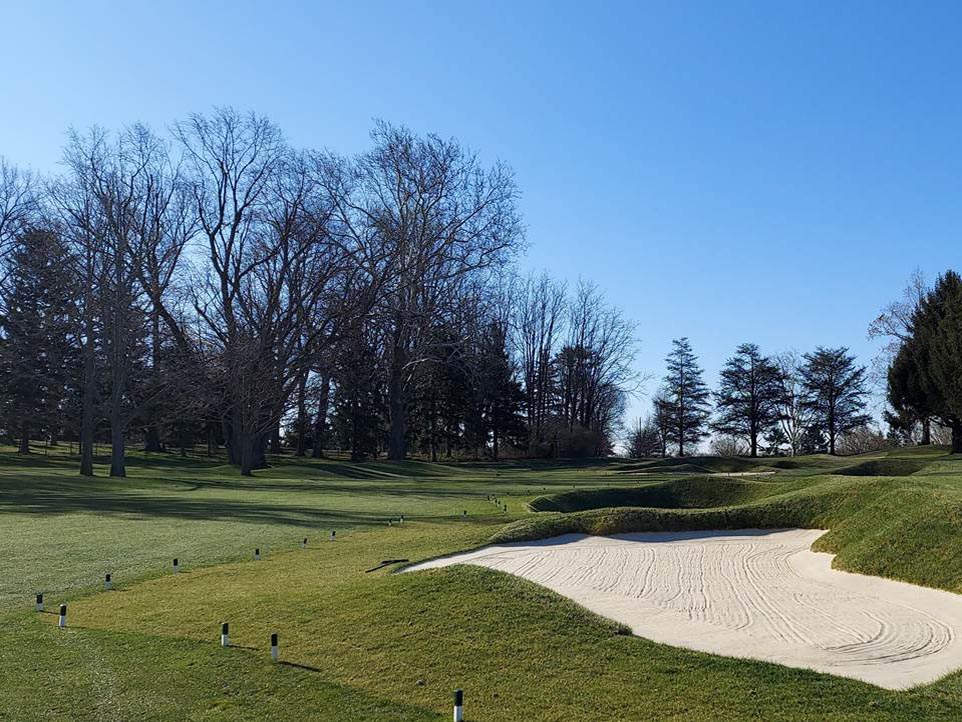PROJECT DETAILS
Facility:
Columbia Country Club
Date:
Opened in 1921, renovated 2022
Location:
Chevy Chase, MD
Sod Producer:
Riverside Turf
Fun Facts:
100-year-old course has ties to Bobby Jones and President Warren G. Harding
About Project
When the membership of the historic Columbia Country Club in Chevy Chase, Maryland, decided it was time for a full golf course renovation, they chose to switch from cool-season ryegrass to warm-season Tahoma 31 bermudagrass. Hotter summers and more volatile weather patterns, attributed to climate change, were making it increasingly difficult to keep a healthy stand of ryegrass in the fairways during peak season play. A motivated group of high golf IQ members worked with Superintendent Matt Sumpter and Golf Course Architect Joel Weiman to bring the course into 21st-century technology while honoring the century-old classic club’s past.
PROJECT DETAILS
Facility:
Columbia Country Club
Date:
Opened in 1921, renovated 2022
Location:
Chevy Chase, MD
Sod Producer:
Riverside Turf
Fun Facts:
100-year-old course has ties to Bobby Jones and President Warren G. Harding
Challenges & Solutions
Challenges:
- Warmer summers increasing stress of heat, traffic, and disease
- Cool-season ryegrass fairways no longer a viable option
- Historic course considered hallowed ground, required extreme care and deference to the past
- Low handicapper membership’s desire for highest quality playing surfaces with little downtime during the renovation
Solutions:
- Convert fairways to warm-season Tahoma 31 Bermudagrass
- Sodded for quick grow-in
- Immediate water savings
- Significant decrease in fertilizer
Outcome
Nearly 30 acres of sod were planted in the summer of 2022, sodding more than 100,000 square feet (2.5 acres) per day. The sodding was fast-tracked to minimize disruption of play, to make a September reopening deadline, but also to avoid spring washouts that were inevitable considering the predictability of summer thunderstorms and the steep slope of many of the fairways.
Weiman and Sumpter both say they were expecting significant water savings moving from cool-season ryegrass to warm-season bermudagrass. However, the results on the ground, even just a few weeks after the grass was laid, were remarkable.
“I don’t think it’s rained for six days, and there has not been a need to water the Tahoma 31 that’s been established. I think we could stretch it out to 10 days. The water usage is night and day,” Sumpter says. “We have established cool-season rough that’s wilting before the new, young Tahoma 31 grass is. It’s incredible. I think the water savings is going to be dramatic. I’d say the ryegrass would require 10 times more water than the Tahoma 31.”
Sumpter also says he expects a monumental reduction in fertilizer use on the course.
“With the ryegrass fairways we used a pound to a pound and a half of nitrogen per 1,000 square feet, per year. With the Tahoma 31 fairways, I hope to be around a half a pound for the entire year next year total. I expect about a 50% savings there,” Sumpter says.
Weiman adds, “The club is looking for performance, consistency, and playability. But just as important is that it’s sustainable. We’re in the Chesapeake Bay watershed. It’s right near the Potomac River.”
Weiman says the course will be an example for all of the clubs in the Mid-Atlantic region.
“In the past, bermudagrass was thought of as a somewhat lesser product, but that’s all changed now with newer varieties like Tahoma 31,” Weiman says. “A club like Columbia doing their research and converting to bermudagrass proactively? That’s going to change how many of the area clubs are going to look at that grass. We’re going to see the number of turf conversions increase significantly over the next five years, for sure.”
Source: Excerpted from ASGCA’s By Design magazine, Fall 2022 issue






